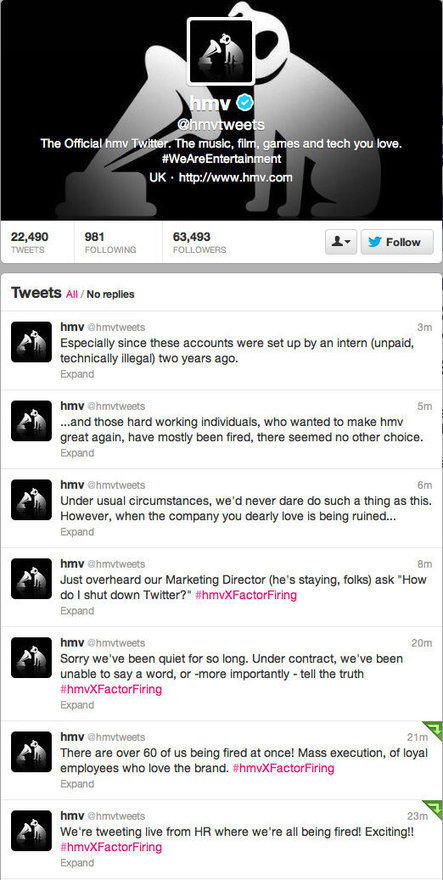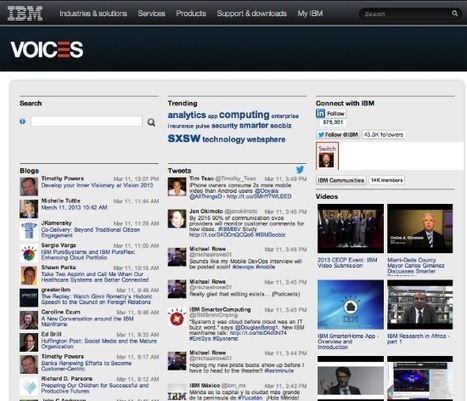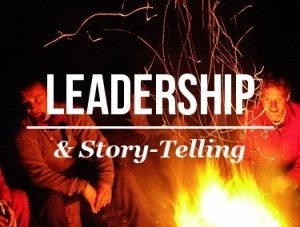 Your new post is loading...
 Your new post is loading...
When the rumblings of an organizational crisis begin, a skilled communicator understands how critical their actions are in ensuring employees make it through the process as engaged and informed as possible. Failing to provide enough knowledge or context to your workforce could have damaging results for your company. Take the case of HMV. The entertainment retailer had a social media meltdown recently when staff took over the company's Twitter account to express anger at being fired [click on the image below to see the tweets in full]. Employees “live blogged” their own sacking on the site and HMV moved to delete the posts from the @hmvtweets account, which broadcast the news to its 60,000+ followers.... To keep employees engaged through the crisis process and protect both internal and external reputation, there are key actions you can take....
The hyper-local news website network issued an internal memo on Friday touting good news to come. On Monday, heads rolled and some offices were shuttered. Imagine you're sitting at your desk at work on a Friday afternoon. You're shocked to receive an email stating that the company's CEO is resigning, but the chairman sends a reassuring follow-up email stating that some positive retooling is coming. Then, on Monday, you and a lot of the other people in your office are laid off—with no severance pay. It sounds outlandish, but that's exactly what happened to employees at Daily Voice, a network of hyper-local news websites in the Northeastern United States. According to Gawker, employees were told Monday the company would shutter 11 bureaus in Massachusetts. Many of the most experienced employees in its Connecticut and New York offices received layoff notices. Those sites will continue running with smaller staffs....
The chain reportedly asked managers to categorize employees as "green," "yellow" or "red," for targeting layoffs. Communication experts say the system is flawed.... In January, 5,500 Penney in-store employees were laid off. Another 300 jobs were cut at its headquarters in Plano, Texas. This isn't the first case of a company's using traffic-light colors as code for an employee's status. In 2010, telecommunications company Everything Everywhere faced harsh criticism for indicating whether employees could be laid off or not with red and green visual aids given in informational packets. JC Penney isn't disclosing the light system to store employees, but communicators say this idea is just as bad....
Even with Citigroup’s huge job cut plans announced Wednesday, Hewlett-Packard Co (NYSE:HPQ) remains the leader in corporate job cuts from U.S.-based companies in 2012, according to data from Challenger, Gray & Christmas Inc. Back in May, the ailing Palo Alto, Calif.-based tech giant said it would cut 27,000 jobs to save up to $3.5 billion. H-P contributed to May being the peak month in 2012 for job-cut announcements with more than 61,000 and pointed to computer companies as one of the most vulnerable industries of the year. Shares of H-P are down more than 45% for the year....
...I’ve written before about the value of your employees, and the very smart Leon Noone has shared his thoughts on the value of looking after your employees by creating the right culture and expectations from the start, as well as continuing to live by them. Yet so many businesses miss this, and instead talk a good talk about customers while missing the walk when it comes to internal customers – your employees. They’re the folks that represent your brand in public; they’re the folks that determine the customer experience; they’re the folks that keep the wheels turning. The importance of having the right culture and making sure there’s a good fit on both sides – brand/employee and employee/brand – is evident, as highlighted in this article from Forbes...
The profession and perception of internal communication (Internal Comms or IC) has undergone many changes over the years, moving from newsletter writers to trusted business advisers. Or at least that’s what we hope. Much work has been done, but there’s still a journey ahead. However, it’s the area of social media and its role for and in internal communications that is the current bump in the road for many. I’m going to look at 10 reasons why internal comms professionals should use social media and share some thoughts to help you make smart choices....
The banking giant announced 11,000 layoffs, doing so in a remarkably convoluted press release that the media can have their way with. Communicators weigh in. ...In a remarkably convoluted press release on Wednesday, the banking giant announced it would lay off 11,000 employees. Several communication professionals say the press release is so bad it insults employees and gives the media carte blanche to interpret the news as it wishes. “This is textbook of the old way of writing a press release,” said Jim Ylisela, a veteran journalist and communications consultant. “It is so perfectly bad, from start to finish.” Here’s a look at what went wrong—and what you can do to avoid such mistakes.... [PR fail: BS, bafflegab and insensitivity. How NOT to announce 11,000 employee layoffs. ~ ]
Infographic: Crummy bosses aren't just a pain; they're bad for business. But how bad? We've found the stats--and it's not pretty. [Powerful reasons bad bosses are bad for business ~ Jeff]
Recent research shows that people trust their companies more than they trust the media. Employers are increasingly talking about politics with their employees. In fact, since we began our outreach and monitoring, we have seen a fourfold increase in employer-to-employee political communications, from 5% of the private workforce hearing from their employer about politics in 2000 to over 20% in 2008. There is a popular, but erroneous, notion that when employers communicate with employees about issues, candidates and the political process, that this is somehow inherently corrupting to that process. This conclusion is wholly unsubstantiated by fact or historical perspective — and it's inconsistent with the desires of the employees themselves. Our data suggests that employees overwhelmingly support the notion of employer-provided issue and political information. Employees not only want more information from their employer about issues that affect their livelihoods, they tend to believe their employers over other sources.... [This was very surprising, counterintuitive research data to me ! Jeff]
Author Paul Smith describes how a finance pro used open and honest communication to navigate the stickiest of situations: a payroll shortage. “The first time I couldn’t make payroll was the worst,” Andrew explained. “Having to choose which employees got paid and which didn’t was emotionally draining.” Most leaders trained in big-company environments would have handled it with the veiled finesse of a corporate lawyer. First, secretly decide how much each employee deserved to get, then talk to each employee, in private, and explain how much of their pay would be withheld until cash flow improved. Lastly, don’t tell anyone how much the other employees were getting. But a wink and a nod from the boss leads all of them to believe they were getting more than average. The secrecy would foment doubt. Maybe they were getting less than everyone else. The result is widespread suspicion, jealousy and complete lack of trust. Fortunately for employees at bfinance, that’s not what Andrew did. Instead, he pulled all 25 employees into a conference room and explained the predicament in brutally honest terms. He wrote a number on the whiteboard and said, “That was our bank account balance at the beginning of the month.” Below that he wrote several other numbers, and explained, “Those are the revenues we expect to get this month and the expenses we have to pay to keep running the business.” After adding them all up, he wrote the result underneath. “That’s what we’ll have left at the end of the month to pay salaries,” and he circled the number. Just to the right of it, he wrote another number, and circled it. “That’s how much your monthly salaries add up to.” Andrew paused and let the audience assess the stark dilemma in front of them. The number on the right was much bigger than the number on the left. In fact, there was only enough money to pay about a third of the payroll. If anyone ever told a story using numbers more than words, Andrew was doing it. Then he did something else unlikely to happen in a big company. He asked the employees—all 25 of them—what they thought he should do about it. He assumed the fairest thing to do was to pay everyone a third of their salary. But the team surprised him with a different suggestion. They thought a better method would be to pay a third of the employees all of their salary, and the other two thirds none. Andrew was horrified. How could he possibly choose which employees to pay and which not to pay? But the group surprised him a second time when they offered to help there as well. They would decide among themselves. Their criteria were based solely on who needed the money most urgently and who could wait a month or two to catch up. Andrew left the team to discuss the matter. When they delivered their decision, Andrew got his third surprise of the day. The people on the list to get paid were not the ones he expected. He thought the younger employees with the smaller salaries would be in the most desperate position. But among themselves they decided that the older ones—the ones with families to feed and mortgages to pay—had the most immediate commitments. Several of the younger ones still lived at home with their parents, or in an inexpensive apartment and had no family to support. They were the ones who volunteered to go without.... [A powerful story by Paul Smith and a must-read for crisis pr and employee communications specialists ~ Jeff]
Time is running out to nominate a United employee for excellent service, said no one, ever. Oh, wait. Someone actually did say it! Click the image to the left to see an email I received from United a couple of weeks ago telling me exactly that.
This email is wrong on so many levels. Where to begin?
Let’s start with the most basic, which is the level of service United (i.e., their people) delivers. I’ve written two blog posts (The Experience Speaks Louder Than Words and Are We There Yet?) about my less-than-stellar experiences with United, but you and I both know that there are a ton of other examples of bad service at the hands of United staff.
I know there are plenty of examples from American, JetBlue, Ryanair, and other airlines, too, lest you think I’m just picking on United. But take a look at these; United has done a great job of angering its passengers in a variety of ways...
[This post points to the many challenges of employee recognition and communication programs, particularly in the social media era ~ Jeff]
Tips for internal communicators who must address alleged layoffs, company takeovers, and other erroneous topics in the office rumor mill. WikiHow is fascinating. Modeled after Wikipedia, this online how-to manual lets anyone submit step-by-step instructions for just about anything, from the practical "How to wake up without an alarm clock," to the esoteric "How to spin a pencil around your thumb," to the intensely personal "How to trick a guy into kissing you."
I don't spend my days trolling wikiHow for professional tips, but I did stumble across one article, "How to stop rumors," that is for internal communicators who often need to address layoffs, management shake-ups, plant closings, mergers, and a whole host of scuttlebutt that may or may not involve material information.
Here are three tips to shut down rumors within your workforce....
How do you make your story compelling? Here are 10 tips for telling a good tale:
1. Know your audience - what are their needs and interests, what issues matter to them? If you work in an organisation, listen, ask questions, collect evidence, engage with differing perspectives beforehand
2. Connect by adding a human element to your story…connect the abstract, numbers, data to someone
3. Keep it short, simple and relevant to the context
4. Appeal to shared values and beliefs
5. Be authentic and speak from the heart – your passion and sincerity will shine through
6. Be inclusive and use ‘we’ and not ‘I’ , ‘they’, ‘them’. 7. Engross your audience with the use of metaphors, analogies and make use of specific details...
8. Bring your characters to life – appearance, occupation, department they work in …
9. Base your story on reality…otherwise you will get found out eventually
10. Make use repetition – memorable phrases or sound bites... [Lots more great tips and insight from Vera Woodhead on Rachel Miller's blog - JD]
|
About today's guest post: As companies mature their online presence though more robust social engagement, individuals within those companies are advancing use
Learn how to find stories and spread the word of your success today with these tips. On the one hand, SAS, a business software company, had sheep that grazed under the solar panels on its North Carolina campus, keeping the grass trim. On the other, it had employees it wanted to keep engaged. Put them together, and it came up with a "Name That Sheep" contest, in which staff got to vote on options such as Buttercup and Lilly. Contests—which can also be used to gather photos and stories—were just one of a basketful of ideas that emerged in a panel discussion on the power of corporate storytelling and other internal communications areas. The session was part of Ragan's Social Media for PR and Corporate Communications Conference at the Walt Disney World Resort....
The vultures have been circling Groupon founder and CEO Andrew Mason for a while now. Today, they swooped in. With the company trading around a quarter of its IPO price and its future cloudy at best, the board officially gave Mason the boot and announced a search or a new chief executive. Mason, meanwhile, is going to fat camp. Or so he says in an amazingly self-effacing and candid goodbye letter he tweeted out to Groupon's employees (Groupon PR also confirmed it was real. Can't be too careful.). "I was fired today," Mason writes. "If you're wondering why...you haven't been paying attention." The ex-CEO then precedes to graciously take responsibility for Groupon's recent travails, before wishing his former work force the best. Say what you will about the man's business acumen, at least he's self aware....
The research found that global best-in-class companies share four principal qualities in the way they communicate with their employees: - They have an employee-centric focus that drives communication strategy - They set benchmarks and goals that align with corporate goals - They measure performance and success toward goals, while tracking employee attitude - There is a deep-rooted desire to always improve communication with employees and build upon current success....
... One of the things that I’ve been most interested in with regard to IBM’s social business journey is how effective they’ve been at activating their own employee base as well as their hundreds of thousands of customers worldwide. I think IBM is really, really smart in that it’s not about them. It’s not about how loud can they shout or how often can they talk at you, it’s about how can we get other people to be our megaphones for us. That’s why I’m so delighted to have on the show today Sandy Carter, who is the Vice President of Social Business Sales and Evangelism for a little company you may have heard of called IBM....
...Research indicates that engaged employees contribute to the long term success of organizations. There are many perspectives about the value and practice of employee engagement. This Myths and Realities Checklist can help sort fact from fiction....
Via Daniel Watson
What could help a huge corporation like McGraw-Hill operate more efficiently, connect global offices, crowdsource ideas and develop products? Patrick Durando, senior director of global new media, prescribed a social intranet. It’s kind of like Facebook for an enterprise — but, Patrick warns, don’t tell your executives that.
Instead, tell them about the story of how one employee met with a client, figured out their biggest issue, essentially “tweeted” it internally and received 25 answers across all departments on his cab ride back to the office. Durando says that’s what a social intranet can do.
Durando shared how McGraw-Hill’s social intranet, Buzz, became a practical tool for collaboration in a presentation at SocialMedia.org‘s BlogWell conference in New York. Here are some takeaways from his presentation....
[Internal "Facebook" solution working for employees and outside too writes Andy Sernovitz ~ Jeff]
Show me a great leader and I'll show you a talented storyteller. Leadership and storytelling go hand-in-hand. In fact, leaders who lack the ability to leverage the power and influence of storytelling are missing the very essence of what accounts for compelling leadership to begin with – the story. Give me a few minutes and allow me to share a story with you – it may just change your life.... [Here's a compelling look at leaders who are storytellers ~ Jeff]
Via José Carlos
Welcome to the IPR’s Organizational Communication Research Center (OCRC), your comprehensive source for game-changing employee communication research, best practices and measures. If you want to learn more about engaging employees, building trust and improving communication climate, this is the place.... [Excellent resources for internal & employee communications ~ Jeff]
CEO David Siegel violates every rule of employee communication, tact and engagement in a companywide email signed "your boss."... This week, however, Siegel's name is in the news for an excess of a different sort. On Monday he sent his employees an email that is so crass and so over the top that even the gossip news website Gawker felt compelled to check out if it was real. Sadly, it is. Siegel confirmed it. "If any new taxes are levied on me, or my company, as our current President plans, I will have no choice but to reduce the size of this company," he wrote to employees. "Rather than grow this company I will be forced to cut back. This means fewer jobs, less benefits and certainly less opportunity for everyone." The hardcore Republican Siegel simultaneously defends his wealth and whines about what it took for him to amass it. He rails against the government, news media and taxes, as well as the "unproductive" people he believes benefit from government aid. He advises employees: "The economy doesn't currently pose a threat to your job. What does threaten your job however, is another 4 years of the same Presidential administration. Of course, as your employer, I can't tell you whom to vote for, and I certainly wouldn't interfere with your right to vote for whomever you choose."... [A poor example of CEO communications and leadership in my view ~ Jeff]
a case study from Blogwell NYC... ...Last month, Dow Chemical’s Abby Klanecky spoke at Blogwell NYC about developing its in-house scientists into well-respected social voices (check out the play-by-play on SocialMedia.Org). The decision to turn to its scientists came after the company realized that while the nation’s unemployment rate is hovering between eight and 10 percent, there are still 1-2 million open jobs in science – yet only 26 percent of the country is currently qualified for these positions.
By building social awareness about the opportunities within science, Dow Chemical could help secure their future as a home for the top talent in the industry, as well as encourage a younger generation to explore opportunities within the field.
While the concept of turning scientists into socially savvy advocates seemed like a great solution, the reality of taking these traditionally internal professionals with minimal social knowledge and turning them into ambassadors for the brand presented several challenges....
[A unique social advocacy strategy seems to be paying dividends for Dow ~ Jeff]
Communicators take note of this survey from Fierce Inc and its implications for employee and internal communications. Here are the core findings: What Employees Want 1. Transparency
2. Autonomy
3. Responsiveness Source: Fierce Inc., 2012 SURVEY RESULTS Nearly 50 percent identify lack of company-wide transparency and too little involvement in company decisions as key areas of concern. Nearly 50 percent selected lack of transparency as the top practice holding their organization back. 25 percent are concerned decisions are made by management behind closed doors. 25 percent dislike that information is disseminated on a “need-to-know” basis. I'm not sure there is a better guide for leaders and communications professionals - JD
|



 Your new post is loading...
Your new post is loading...































Valuable tips for engaging employees in a crisis.